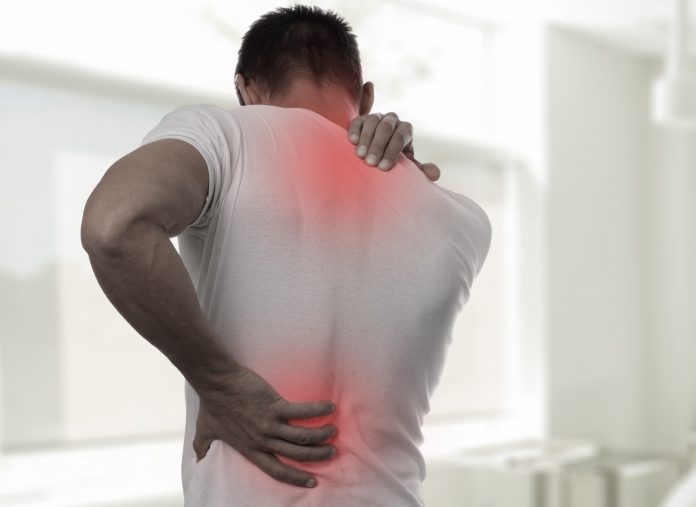Every time you have a sore muscle after a long day, you must not pop a pill. Finding holistic means is the best way to treat common muscle pains. Intense exercises or unaccustomed HIIT or strength training workout is a common cause for DOMS (delayed onset of muscle soreness). Advocating a natural approach using herbs and herbal supplements is good for your health and well-being rather than inching towards NSAID or diclofenac pain relievers.
Herbal medicines are increasingly growing in popularity for managing pain and other health issues. They are inexpensive, naturally competent, and do not cause side effects. You can have them as long as you wish without worrying.
On that note, we have shared top herbs that help treat muscle pain as effectively as pharmaceutical medicines. Since there’s not much you can do to avoid muscle soreness and pain, these herbs will help you relieve pain, manage symptoms, and decrease inflammation, and perhaps make your chores much more comfortable.
What Kind of Muscle Pains Can Herbs Cure?
DOMS is the most common type of muscle pain. It is characterized by muscle hardness, involuntary cramps, bulging, and tightness. Delayed Onset of Muscle Soreness and Spasms commonly occur in arms, legs, calves, hands, and abdomen. Strenuous exercise, sport, or repeated use of a particular muscle cause DOMS. You will probably start to experience the pain after 24 to 48 hours. The pain and soreness can last up to 3 days.
Muscle stiffens when it overworks, which hampers the circulatory system. The obstructed circulatory system prevents muscle cells from absorbing adequate nutrients, making them undernourished. Hence, the pain. Soreness happens when lactic acid builds up in the overstressed muscle tissue.
When your muscle is torn or sprained, it results in inflammation, bruise, or swelling. Prescribed medicines, hot showers, applied heat, and herbal oil massage brings vitality back to the aching muscles by pumping in enough blood to those malnourished cells.
Heat enlarges the blood vessels, boosting blood circulation. Herbal balms and oils are effective and side-effect free means of applying heat to tensed muscles. Most of the mentioned herbs can be easily found in your kitchen cabinets. So, yes, it saves your time at the pharmacy too.
Best Herbs for Muscle Pain
Since balms’ main ingredient is herbs, you can easily prepare your own herbal remedy at home and treat your sore and inflamed muscles. Here are some of the common herbs used in relieving mild-to-moderate muscle pain and cramps.
Turmeric
Turmeric is a universal health care ingredient used not only for internal ailments, such as cold and cough but also external ailments, like muscle pain and wounds. Turmeric effectively relieves pain, stiffness, and swelling because of its key ingredient, curcumin.
Curcumin is a powerful antioxidant that destroys free radicals in the body. Free radicals create oxidative stress, which is known to cause inflammation and aggressive tissue damage. Curcumin protects our blood vessels, muscle cells, and tissues by neutralizing harmful molecules. Turmeric is frequently used in Ayurvedic Science and Traditional Chinese Medicine and to treat arthritis-based joint pain. You can include turmeric in your everyday meal or consume it as a liquid herbal supplement.
Chamomile
Chamomile is loaded with a good deal of health-benefiting properties, including flavonoids that typically deal with inflammation and spasms. Also, chamomile is used as an effective treatment to soothe tensed muscles and boots sleep. Chamomile is available in different forms, such as oil, tea, and in cosmetics. To relieve pain, you can sip chamomile tea or massage the oil on the sore muscle twice a day.
Devil’s Claw – Harpagophytum Procumbens
This fascinating herb is found in the wild Kalahari desert of South Africa. The herb extract is used in a variety of joint inflammation treatments, such as rheumatoid arthritis, goiter, muscle and joint pain, and backache. The herb can reduce 60% of pain associated with arthritis and chronic lower back pain.
Devil’s claw is available in both tablet and tincture form. You can use either of these to treat your symptoms. However, the tincture is more effective as it directly gets absorbed into the bloodstream without needing to be digested. If you have gastrointestinal problems, tincture proves to be a better choice.
The recommended dosage for the devil’s claw is a few drops mixed with water twice a day.
Arnica
Arnica is universally used in traditional Indian and Chinese medicine to treat a number of skin problems. However, the flower has been long-used in relieving joint aches, muscle pain, and mild bruising. Arnica oil is extracted from the bright yellow mountain daisies, found in the mountains of Serbia and Europe all through the year.
Lactone is one of the active ingredients found in Arnica. Lactone stops the production of Nuclear Factor Kappa Beta (NF-kβ) at its onset of starting an inflammation. NF-kβ is a protein complex that controls the immune system’s response to an injury, wound, infection, or tissue damage.
In a particular study, osteoarthritis patients saw considerable improvement after using Arnica regularly. You can avail Arnica in gel form, oil or tincture.
All three forms of Arnica are equally effective in treating pain and muscle soreness.
Ginger
Ginger contains anti-bacterial and antiviral properties along with anti-inflammatory compounds, such as shogaols and gingerols. Ginger is widely used in treating cold and flu symptoms, such as sinus pain, muscle ache, and headache. Besides, many traditional healthcare practitioners prescribe ginger to treat bouts of nausea, cough, and digestive problems.
As an active anti-inflammatory agent, ginger reacts the same way in our body as COX-2 inhibitors do in arthritis drugs. The anti-inflammatory properties in the herb reduce oxidative stress caused by free-radicals.
A study conducted on osteoarthritis patients found that concentrated ginger extract effectively reduced pain and stiffness in the joint by 40%.
Other Less Effective Drugs
Bromelain, capsaicin, feverfew, ginseng, kava kava, and valerian root are other herb varieties that have proven useful in reducing muscle pain and spasms.
For instance, according to David Kiefer, Clinical Professor of Medicine, Arizona Center for Integrative Medicine, capsaicin blocks the substance P, a chemical compound that signals pain from the peripheral nervous system to the central nervous system.
Regardless of the herb you choose, start with minimal dosage to ensure there’s no adverse effect or allergic reaction.
I hope this article helps you choose a safer alternative to muscle pain. If you have questions, post them in the comments below. We will get you your answers.
This article is for informational purposes only. Please consult your doctor before trying any new regiments.






















